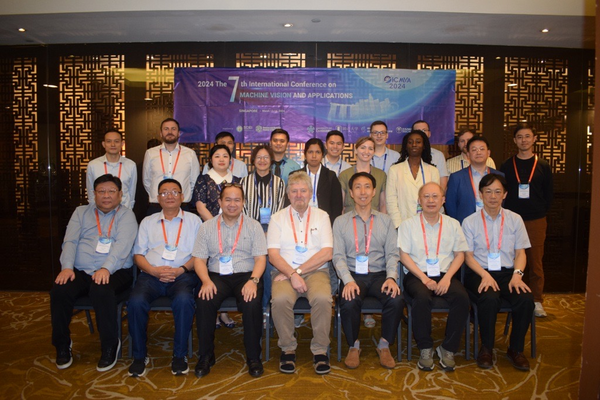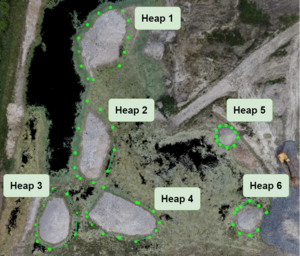The seventh International Conference on Machine Vision and Applications took place in Singapore from March 12 to 14, 2024. As part of this event, researchers from the Austrian Institute of Technology Center for Vision, Automation & Control, Marco Wallner, Matthias Schörghuber and Markus Hofstätter, presented their groundbreaking paper titled “A Unified Database Schema for Geometric and Semantic Data: Continuous Volumetric Stocktaking in Gravel Quarries”. This paper is part of the FFG project "openSCHEMA", which was successfully completed in April 2024 and focused primarily on the development of a broadly applicable, generic format for environment modeling.
The openSCHEMA project addresses three central use cases or domains: indoor in the field of intralogistics, as well as outdoor scenarios in a vineyard and a gravel pit. The aim of the project is to create an open mapping framework for autonomous mobile robots that ensures interoperability and open interfaces. This framework should enable robust and long-term stable localization and thus prepare for the next development stage of automation. This will facilitate the flexible use of mobile robots even on difficult terrain and in dynamic environments.
The database structure developed in the project was modeled with the open source database management system "PostgreSQL" and extended for spatial data such as points, lines and areas in space. This makes it possible to store environment data from typical robotics applications in a structured way and to access it efficiently.
The paper introduces this new database structure that integrates geometric and semantic data and enables continuous monitoring of material volumes in gravel plants. The current methodology in the industry often relies on isolated, offline tools that introduce time delays and potential inaccuracies in data collection and processing. The presented scheme utilizes the PostgreSQL extension "PostGIS" to robustly store and manage spatial data and continuously update the data. It also enables seamless integration with open source geotools such as QGIS.
The paper illustrates possible areas of application using the scheme for continuous monitoring of the volumes of piles in a gravel plant. By defining regions of interest (ROIs) within the gravel plant and using point clouds generated by Structure from Motion (SfM) or LiDAR, a volume estimation process is performed. This includes the extraction of ROIs from point clouds, the detection of the ground plane, the creation of surface models and finally the volume estimation. The results are written back to the database as meta-information and are thus available to the gravel plant operator.
The accuracy of the system was confirmed by comparing the volume estimates with the commercial offline tool Pix4D. The results demonstrate the performance and accuracy of the system for continuous, real-time monitoring and volume estimation in mining and gravel environments. This work represents significant progress towards unified systems that enable the development of more complex, integrated overall systems. The paper was published in the ACM Conference Proceedings:
Marco Wallner, Matthias Schörghuber, and Markus Hofstätter. 2024. A Unified Database Schema for Geometric and Semantic Data: Continuous Volumetric Stocktaking in Gravel Quarries. In 2024 The 7th International Conference on Machine Vision and Applications (ICMVA 2024), March 12-14, 2024, Singapore, Singapore. ACM, New York, NY, USA, 8 pages. https://doi.org/10.1145/3653946.3653959%22%20/t%20%22_blank%22%20/o%20%22https://doi.org/10.1145/3653946.3653959




